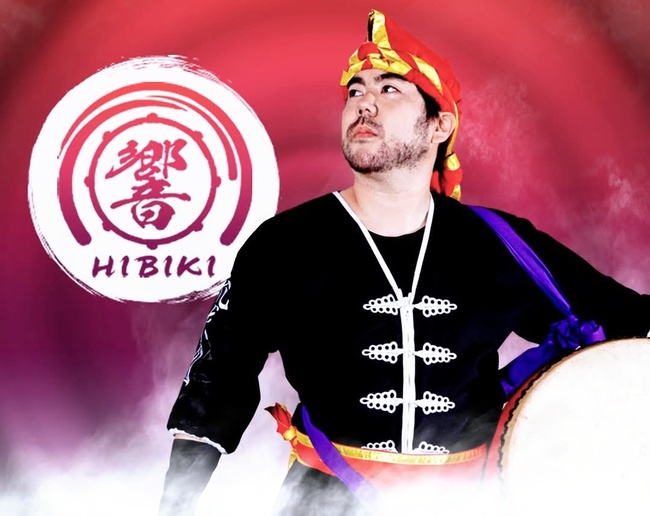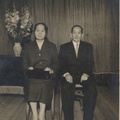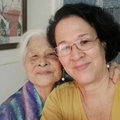We are in Peru, we are a product of Japanese immigration, our country is the second with the most Japanese and Nikkei immigrants born here. I would like to tell you a story that relates my daughter to Ryukyukoku Matsuri Daiko (RKMD). It started a little over 14 years ago. My wife and I had never heard of eisa. A relative told me that they had opened registrations for young people to join RKMD, a group that played taiko . They were those big drums that you see in traditional Japanese music, dancing eisa , a traditional Okinawan dance that is performed during Obon, when the spirits of the ancestors are honored.
The place was the La Union Stadium Association (AELU) in Lima, Peru, for us the center of Nikkei integration. That was precisely what was important, that our daughter would connect with other young people who were the product of Japanese immigration. She had developed an animosity towards her roots. I feel that she had inherited it from me, I have the impression that those of us who studied in “non-Nikkei” schools try to hide that side that identifies us with our roots, although it is often evident by our features.
I think that it is basically a defense mechanism to avoid discrimination, the mockery of children, which can be very cruel. She liked dancing, but not exactly Japanese or Okinawan folklore, or music; nor did she like food, of course, the gastronomic boom in our country was still incipient. So many years have passed, my daughter was in school at that time when she joined this group, she finished school, her Administration degree at the university, then she began her working life, and she is still at the eisa. After many years I wonder what she found in it.
I remember that it was two neighbors who finally encouraged her to go as a group. We lived in the old Hacienda San Agustín in Callao. The ideal was for several people to go because of the difficulty of getting around and for safety reasons. The anecdotal thing was that she was the least interested in going. After a while, they dropped out and my daughter stayed. It is difficult to make time for it. Going to rehearsals is tedious and boring, while you see others who go to have fun. She completely changed her life from that moment when she started as a junior. She was a beginner, but I must admit that she developed a discipline, including it in her daily life. She has not stopped since then, currently involved in the organizing committee for the 25th anniversary of RKMD.
Over the years, she has been involved with other groups in our community, venturing into dances, the odori . She does everything possible to attend all the rehearsals and performances. She does it with such passion that, even if it is always on the weekends, she postpones breaks and commitments. Last year was full of activities. She has seen countless young people pass by, some in a passing way, attracted by the performances, by the nice uniform, by seeing themselves photographed with their taiko to upload them to their social networks, and then leaving due to lack of discipline. Others have been forced to take different paths, after years, leaving due to lack of time, some declining in that passion with which they started; others understanding that their cycle in the group had ended. There are also those who have been part of other groups, in search of other sensations, both taiko, and different artistic displays.
I am sure that each and every person who has been part of the group will never forget the adrenaline of participating in the AELU Matsuri every year, putting on a show with all the members, dancing at the same time, as is done in Okinawa. You only have to go to an AELU Matsuri, where my daughter has participated every year without fail.
This is a performing art and it is impressive to see everyone together, dancing, playing at the same time, whether taiko or paranku, with the sound of the sanshin, singing, shouting, as if giving strength, encouragement to others, caring for, covering their partner, because in the end they are a whole, a solid group, even if there are just a few or more than a hundred dancing. What they feel is transmitted and felt by each one of the spectators, with each beat of the taiko at the same time, making it resound, all in harmony, seeing the flags flutter, giving their all in each performance. RKMD is a family where the kids have involved their parents, siblings, relatives and friends to integrate in one way or another. Some will enter, others will leave, but I am sure that, without exception, they will describe that emotion, the adrenaline that it generates, especially when dancing in a Matsuri, gathering like a thousand people, alongside children, young people and adults, transmitting to the spectators that same emotion when dancing to the rhythm of the drums, each beat, a heartbeat.
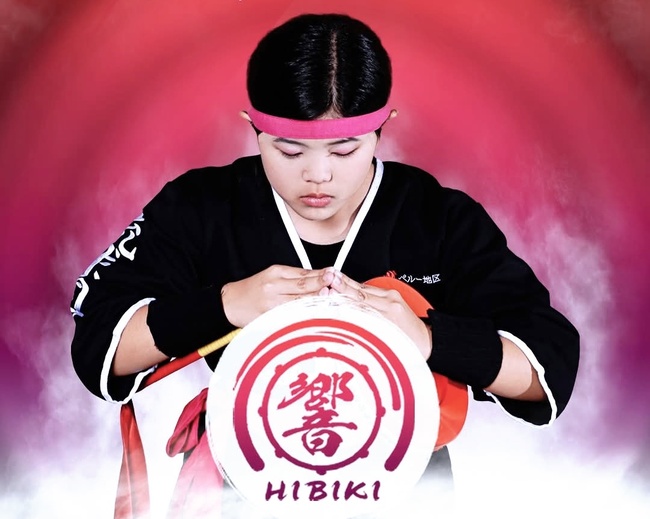
I really couldn't understand all this, so I looked up Ryukyukoku Matsuri Daiko (RKMD). I found a group that originated in Japan, in Okinawa. It was in 1982 when young people wanted to create a new culture. To do so, they used karate movements and choreographies based on eisa. They welcome people of any age, gender or nationality. They have expanded outside of Okinawa, although it may seem incredible, with 51 branches throughout Japan and 30 abroad (in eight countries). Those in our country are part of RKMD, the Peruvian branch. Phrases like: “People dance, people sing”; “When people are happy, the earth becomes a stage”; “Chubachi (taiko beat) will make fifty friends,” that was the key, the goal was a thousand eisa drums at once and not just for obon; it was to unite hearts with each taiko beat, to bring young people together with a common purpose.
These are non-profit groups, which is appreciated in Okinawa: giving everything without expecting anything in return, just seeking to be happy, singing, dancing, becoming friends, always dreaming, no matter if a language separates us; the feeling unites them, they want to build a bridge. Since 2009, under the title of “Earth Special Acer Pageant”, all the branches, both in Japan and around the world, can perform simultaneously, bringing Okinawan culture to the entire world.
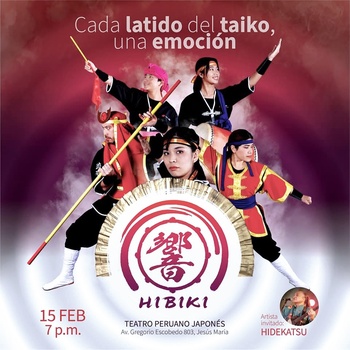
Ryukyukoku Matsuri Daiko Filial Peru is a group that for 25 years has participated without refusing to participate in every invitation to every event inside and outside our Nikkei community, as a way of showing our Okinawan roots and integration. It welcomes everyone, without being a Nikkei, it welcomes anyone who can develop that love for Okinawan culture. During all these years, many people have joined the group, who have left their mark, taking with them that affection, that love received at every event in which they have performed. It is time for all of us to return that affection, for the selfless dedication of RKMD, spreading a part of our culture, of our Okinawan roots.
For Saturday, February 15, as the culmination of the 25th anniversary celebrations, they have prepared a show at the Peruvian Japanese Theater called “Hibiki: Each beat of the taiko, an emotion.” The special guest is the artist Hidekatsu. They expect our presence, just as RKMD has been at every invitation received by every institution inside and outside our community. The celebrations of umaredoshi (birthdays according to the Chinese horoscope), weddings, anniversaries, opening of commercial premises, etc. This February 15, we have an appointment with RKMD, they are waiting for us.
© 2025 Roberto Oshiro Teruya


